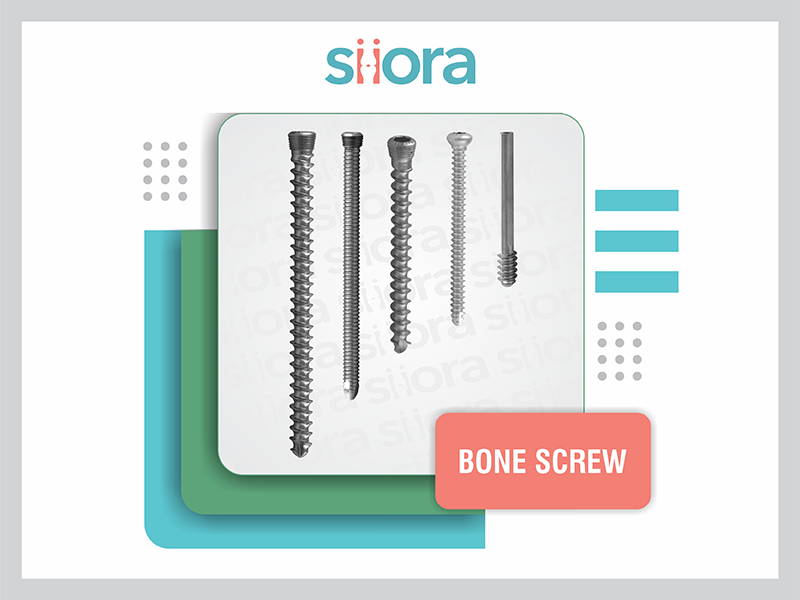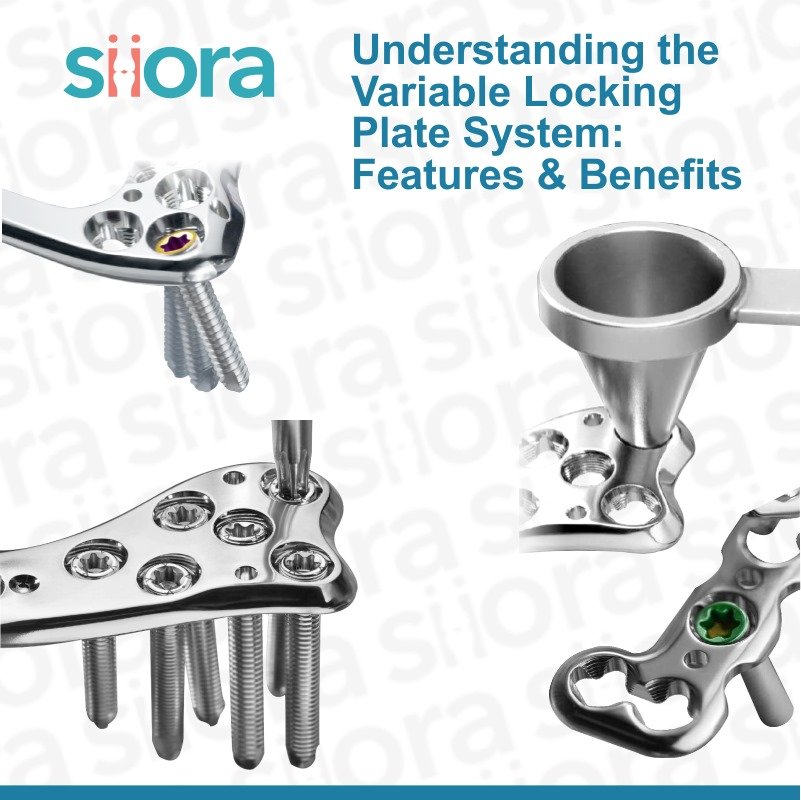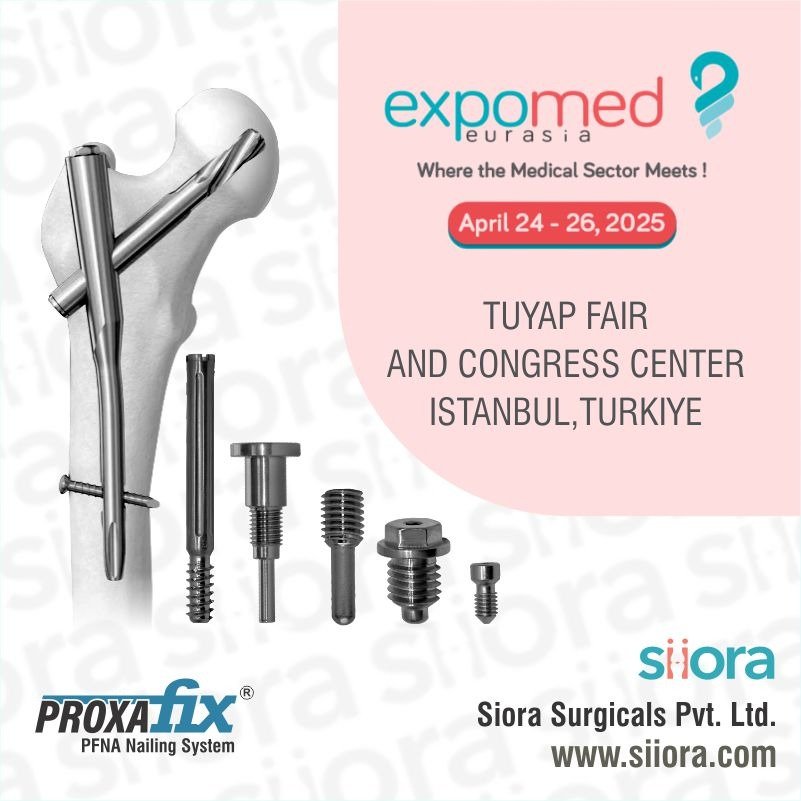The use of orthopedic devices for the fixation of fractures is new as it is being practiced for ages. The things that have changed are the quality and effectiveness along with the materials they are made from. One of the oldest orthopedic implants that are being used is the bone screw.
Archimedes of Syracuse is known to be the father of the screw who invented it in the third century BCE. If we talk about the use of orthopedic screws, then they were used for the first time in the 19th century (1850) by the French surgeons Cucel and Rigaud. The surgery was performed to reduce the olecranon fracture by internal fixation. This was the first-ever internal fixation procedure. During this surgery, the French surgeons used 2 transcutaneous screws.
Advancements in the field of orthopedics have led to the development of different types of orthopedic screws that are being used depending upon the type of orthopedic condition to be fixed. In this post, we will see different types of bone screws that are being used during orthopedic surgeries along with their other details.
What Are Orthopedic Bone Screws?
Orthopedic bone screws are metal-made hardware devices that are specially manufactured to be used inside a human body for the fixation of fractures. They are most commonly made of stainless steel and titanium as these metal alloys show better biochemical compatibility and inertness.
Screws used in orthopedic surgeries play a vital role in ensuring better healing of the fractured bone as the screws provide enough compression while reducing the gap between bone fragments. They are also known to reduce stress on the implants thus, helping them do their job properly. Depending upon the location and seriousness of the fracture, screws can either be used alone or in synchronization with other orthopedic implants.
Parts of Orthopedic Bone Screws
Before we move on to the different types of screws during orthopedic surgeries, let us have a look at the parts of bone screws:
Head
The top flattened part of the screw is known as the head and it is mainly used to insert the screw inside the bone. The head configuration could be different and based on that, the screwdriver is used.
Length
It is the distance between the head of the screw to its tip. Different screw lengths are used for the fixation of different types of fractures.
Diameter
When it comes to measuring the diameter of an orthopedic screw, special care must be taken. This is because there are two types of diameters in orthopedic screws:
- The outer diameter is measured as a total thickness from one end of the thread to other
- The inner or the root diameter is the narrowest diameter which is measured from across the base of the thread.
Note – It is important to make sure that the diameter of the pilot hole must be the same as the inner diameter before screw insertion.
Pitch
Pitch is the distance an orthopedic screw travels with each 360-degree turn.
Tip
The tip is the end of the screw present opposite to the head. The tip of the orthopedic screw can be of three types including non-tapping, self-tapping, and self-drilling.
Different Types of Orthopedic Bone Screws
The orthopedic bone screws can be classified based on the type of bone in which they will be used and also the location. Let us have a look at common types of bone screws used during orthopedic surgeries:
Cortical Screws
Cortical bones account for more than 80% of bone mass in the human body. These types of orthopedic screws are designed specifically to be used for hard bone tissues/cortical bones. Cortical screws are designed to have threads and this means that their pitch will be small. They are fully threaded screws but can also be availed in partially threaded configuration.
Cancellous Screws
Cancellous screws are made to be used in spongy bones that are a bit softer. So, it is important to use screws that deliver better results during orthopedic surgeries. When compared to cortex screws, they are longer and have a larger pitch. Another factor that differentiates cancellous orthopedic screws from cortex screws is that the former ones have deep threads. They can be availed in both partially and completely threaded configurations.
Pedicle Screws
Pedicle screws are designed to be used for spinal fusion or spinal fractures. These types of bone screws are threaded and have a mobile head. Just like other types of screws, pedicle bone screws can also be availed in different sizes. They are used to treat trauma or deformity occurring in the spine. These screws can be placed in the lumbar spine, thoracic vertebra, and sacral vertebra.
Cannulated Screws
Cannulated screws are used for the fixation of different types of fracture patterns and also to pass a guidewire for the correct placement of the screws. They are designed to have a hollow shaft to facilitate guidewire for better alignment before drilling. Cannulated screws help surgeons avoid drilling multiple holes during fracture fixation. These types of orthopedic screws can be availed in cancellous and cortical configurations.
Herbert Screws
They are headless screws and are most commonly used for the internal fixation of bones involving joint cartilages. Some of the most common uses of these types of screws are scaphoid, radial head, capitellum, and osteochondral fractures.
Malleolar Screws
These types of screws are most commonly used for the fixation of small fragments in the cancellous bone. Interfragmental compression of bone plates is what malleolar screws are best applied for. They are known for having a smooth shaft and are available in the partially threaded configuration. Malleolar screws are used for the fixation of ankle fractures.
Materials Used for the Manufacturing of Orthopedic Bone Screws
Orthopedic bone screws are made using materials that are biocompatible and biochemically inert. Below-mentioned is the materials used for the manufacturing of bone screws:
Stainless Steel
Stainless steel is the most commonly used metal alloy for the manufacturing of bone screws. Screws made from this metal can be used for both cancellous and cortex bones.
Titanium
The chances of infection caused by titanium screws are lesser when compared to the ones made from stainless steel. Titanium-made orthopedic screws are known to be best for the treatment of mandibular fractures.
Bio-absorbable
Besides metal alloys, orthopedic screws are also made using bio-absorbable materials including polylactic acid, polyglycolic acid, and poly-L-lactic acid. These types of bone screws need not be removed later on as they are absorbed by the body.
Siora Surgicals Pvt. Ltd. is an experienced manufacturer of all types of orthopedic bone screws that are used for the fixation of different types of fractures. The company uses ISO-grade titanium and stainless steel for the manufacturing of its implants. Siora is an ISO 9001:2015 and ISO 13485:2016 certified company having an FDA-approved manufacturing unit in the RAI District, Sonipat, Haryana (India). The company is also open to providing OEM/contract manufacturing services.








